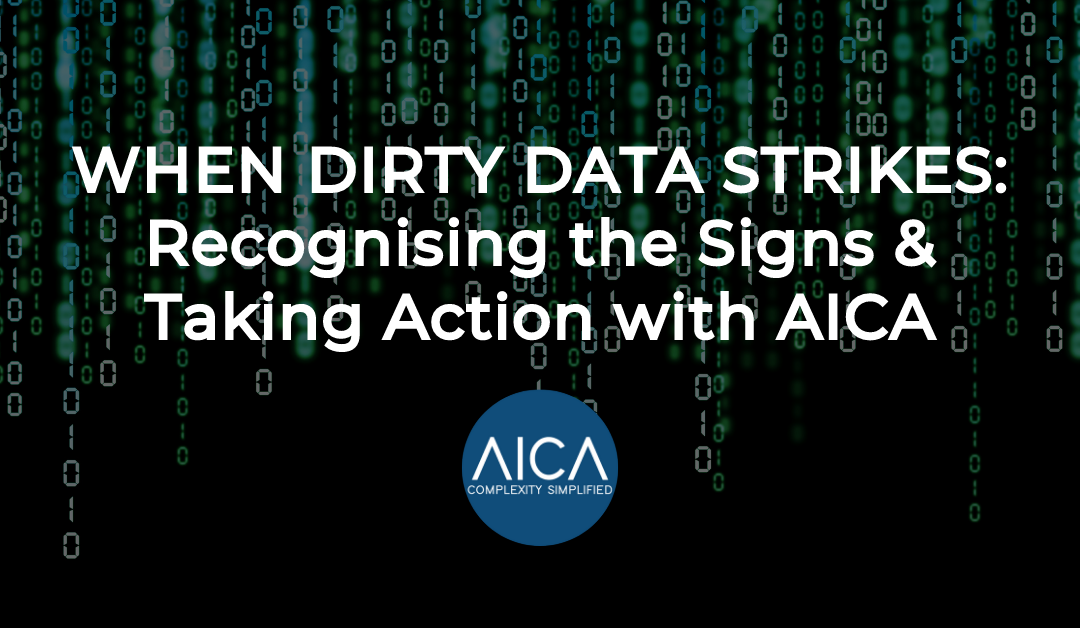Businesses rely heavily on accurate and reliable data to make informed decisions and increase efficiency. However, as data volumes continue to increase, so does the risk of encountering “dirty data” – inaccurate, inconsistent, or incomplete information that can hinder business operations and decision-making processes.
Recognising the signs of dirty data and implementing effective data cleansing strategies is crucial for maintaining data integrity. This article will explore common indicators of dirty data and provide insights into how businesses can address this issue with the help of AICA, a leading specialist in product data cleansing, enrichment, and comparison.
Identifying Dirty Data
Detecting the presence of dirty data early is crucial to mitigate its impact. Here are some telltale signs that your organisation might be grappling with dirty data:
Inconsistencies and Duplicates
If you notice duplicate records or conflicting information within your databases, it could be a clear indication of dirty data. For instance, multiple entries for the same customer or inconsistent product descriptions can signal data integrity issues.
High Bounce Rates
If your email marketing campaigns consistently experience high bounce rates, it could be due to invalid email addresses or outdated customer data. These bounce rates serve as red flags for dirty data affecting your customer contact information.
Low Conversion Rates
Dirty data can result in ineffective targeting and personalisation efforts. If your conversion rates are lower than expected or are declining over time, it’s worth investigating if dirty data is undermining your marketing initiatives.
Discrepancies in Analytics
Inaccurate data can produce misleading insights and metrics. If you notice significant discrepancies between different analytics platforms or irregularities in your performance metrics, it’s important to assess the quality of your data.
The Impact of Dirty Data
Dirty data can infiltrate an organisation’s systems through various channels, including human error, system glitches, or incomplete data transfers. The consequences of dirty data can be severe, ranging from minor inconveniences to substantial financial losses and damaged efficiency. Here are some common effects of dirty data:
Inaccurate Reporting
Dirty data can lead to incorrect business reports, making it challenging to analyse performance accurately, identify trends, and make strategic decisions based on reliable insights.
Poor Customer Experience
Incomplete or inconsistent customer data can result in a subpar customer experience. For instance, sending marketing communications to incorrect addresses or misrepresenting product information can frustrate customers and erode trust.
Missed Opportunities
Inaccurate or outdated data can cause businesses to miss out on potential sales and growth opportunities. For instance, incorrect product pricing or stock availability can lead to lost sales and dissatisfied customers.
Increased Operational Costs
Dealing with dirty data can be time-consuming and costly. It requires manual efforts to identify and rectify errors, leading to reduced productivity and increased operational expenses.
Addressing Dirty Data with AICA
Recognizing the signs of dirty data is just the first step. To effectively address this issue, organisations can leverage the expertise of AICA. AICA specialises in product data cleansing, enrichment, and comparison.
Compatibility with MDM and PIM Systems
AICA seamlessly integrates with MDM and PIM systems, providing a robust data cleansing and enrichment solution that complements your existing infrastructure. Whether you are using an MDM or PIM system to manage your data, AICA can enhance its functionality and ensure that your data is clean, accurate, and ready for analysis and decision-making.
To find out more, visit our website.

